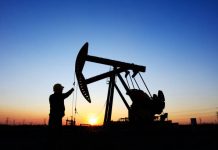Highlights:
- April payroll employment rose a stronger-than-expected 211K returning to a pace of increase evident in the first two months of the year and indicative that the March moderation to 79K was an anomaly.
- The recovery in employment was most evident in private sector, service-producing jobs where hiring jumped to 173K from 54K in March. Goods-producing jobs rose 21K in April which was down slightly from the 23K increase recorded the previous month while government employment rose to 17K from 2K over the same period.
- The separate household survey indicated a further unexpected drop in the unemployment rate to 4.4% from the 4.5% recorded in March and 4.7% in February. Market expectations had been for the April rate to retrace one-half of the March drop.
- Average hourly earnings, the main wage measure in the report, rose an expected 0.3% though this did not prevent the year-over-year rate moderating slightly to 2.5% from 2.6% in March and a Q1 average of 2.7%. Despite the moderation, the data is indicative workers continuing to enjoy real wage gains.
Our Take:
The rise in April payroll employment provides some evidence that the weakness in March where the employment gain dropped to 79K was an anomaly and that businesses confidence remains robust to take on more workers. The wage increase did moderate slightly in April but is still indicative of real wage gains. This continued support to household incomes should contribute to Q2 consumer spending growth, and overall Q2 GDP growth, rebounding to an above-average rate after a disappointing first quarter increase. The FOMC statement this week characterized "the slowing in growth during the first quarter as likely to be transitory" and would likely view today’s employment report as offering support to this claim. Our forecast assumes that the Fed will continue to tighten policy with the fed funds range rising by a cumulative 50 basis points before the end of the year. However, this is contingent upon the upcoming expenditure data confirming a rebound in growth. Our forecast assumes that annualized GDP growth picks up to 2.9% from the 0.7% rise recorded in Q1 with above-average growth being maintained through the end of next year













